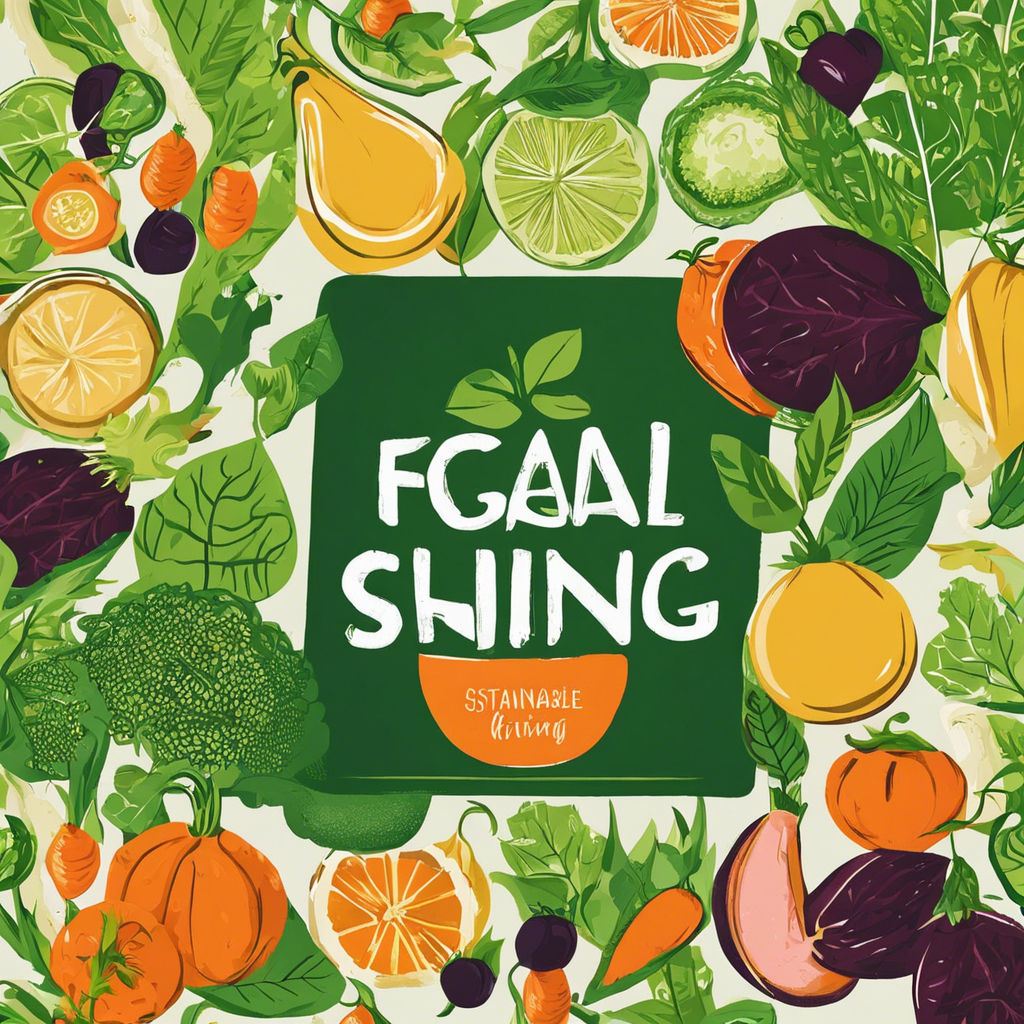Eating is a fundamental part of our daily lives, and the choices we make about what we eat have a significant impact on the environment. With the world facing pressing ecological challenges, it’s essential to understand how we can make our diets more sustainable and environmentally friendly. So, what does it mean to eat sustainably, and how can we make eco-friendlier food choices?
Sustainable eating is about choosing foods that are produced, packaged, and transported in ways that minimize their environmental impact. This includes considerations such as the energy and water used in production, the amount of waste generated, and the treatment of workers and animals involved in the food supply chain. One of the most important aspects of sustainable eating is reducing our consumption of animal products. The production of meat, dairy, and eggs often involves high emissions of greenhouse gases, as well as water and land use. Opting for plant-based meals more often can significantly reduce our environmental footprint.
However, it’s not just about what we eat but also where our food comes from. Choosing locally sourced, seasonal produce can reduce the carbon emissions associated with transportation. Supporting local farmers also promotes a shorter supply chain, which often means fairer wages and better working conditions for those producing our food. It’s also worth considering how our food is packaged. Single-use plastics are a significant environmental concern, so opting for loose produce, reusable containers, and recyclable packaging can make a big difference.
Another important aspect of sustainable eating is reducing food waste. Planning meals, storing food correctly, and using leftovers can help minimize the amount of food that ends up in the trash. Composting is also an excellent way to reduce waste and provide nutrient-rich food for our gardens and plants. We can also embrace more sustainable cooking methods. Energy-efficient appliances and cooking techniques, such as batch cooking and pressure cooking, can help reduce our carbon footprint further.
For those wanting to take it a step further, growing your own produce is a fantastic way to ensure your food is as fresh and sustainable as possible. Even a small herb garden or a few tomato plants can make a difference and encourage us to be more mindful of our food choices. Lastly, education is key. Learning about the environmental impact of different foods and staying informed about sustainable practices can help us make better choices. Sharing this knowledge with others can also create a positive ripple effect, encouraging a wider shift towards more sustainable eating habits.
So, what does a sustainable diet look like in practice? It might involve eating more plant-based meals, choosing local and organic produce, reducing our reliance on single-use plastics, and wasting less food. It could also mean embracing new, more sustainable foods and supporting companies that prioritize eco-friendly practices. Making these changes might seem daunting, but it’s important to remember that every small change adds up. Even swapping meat for plant-based proteins a few times a week or choosing local produce can make a meaningful difference.
One of the simplest ways to start is by planning your meals. Taking time to consider the ingredients you need and their environmental impact can make a big difference. You can also use this opportunity to get creative and try new, more sustainable recipes. There are plenty of resources available online, with an abundance of recipes and ideas to suit all tastes and budgets. You might also like to explore local farmers’ markets and independent food stores, where you can often find an array of locally sourced, seasonal produce and eco-friendly products.
When it comes to eating out, look for restaurants and cafes that prioritize sustainability. Many establishments now source local produce, reduce waste, and offer plant-based options, making it easier to eat out while still being mindful of your environmental impact. It’s also worth remembering that making sustainable choices doesn’t mean sacrificing flavor or convenience. With a little creativity and some simple swaps, it’s entirely possible to enjoy delicious, nutritious meals that are also kind to the planet. Why not try a meatless Monday or a vegan version of your favorite dish? Every step, no matter how small, contributes to a collective effort to protect our planet.
For those who eat animal products, it’s important to choose wisely. Opt for locally sourced, grass-fed, and free-range meats and dairy, and consider the impact of overfishing by choosing sustainably caught or farmed fish. You can also reduce your environmental impact by limiting your portions of animal products and embracing a more plant-forward plate. When it comes to drinks, coffee and tea are some of the most popular beverages worldwide, but it’s worth considering the environmental impact of these drinks, too. Choose fairly traded, ethically sourced beans and leaves, and look for eco-friendly packaging, such as biodegradable tea bags and compostable coffee pods.
In conclusion, sustainable eating is about making choices that benefit both our planet and our health. By reducing our consumption of animal products, choosing local and seasonal produce, reducing waste, and embracing eco-friendly packaging and cooking methods, we can all play a part in creating a more sustainable food system. Education and small, mindful changes are powerful tools in this journey, and every step, no matter how modest, contributes to a brighter future for our planet. By embracing these practices and sharing our knowledge, we can all enjoy delicious, nutritious meals that nourish both ourselves and the world around us.
